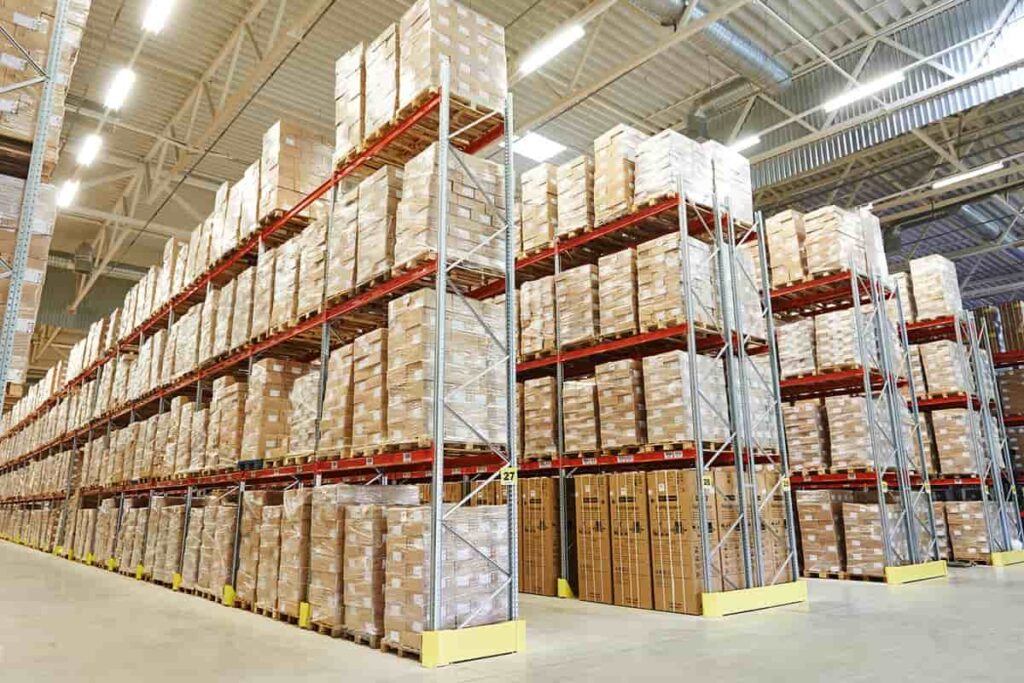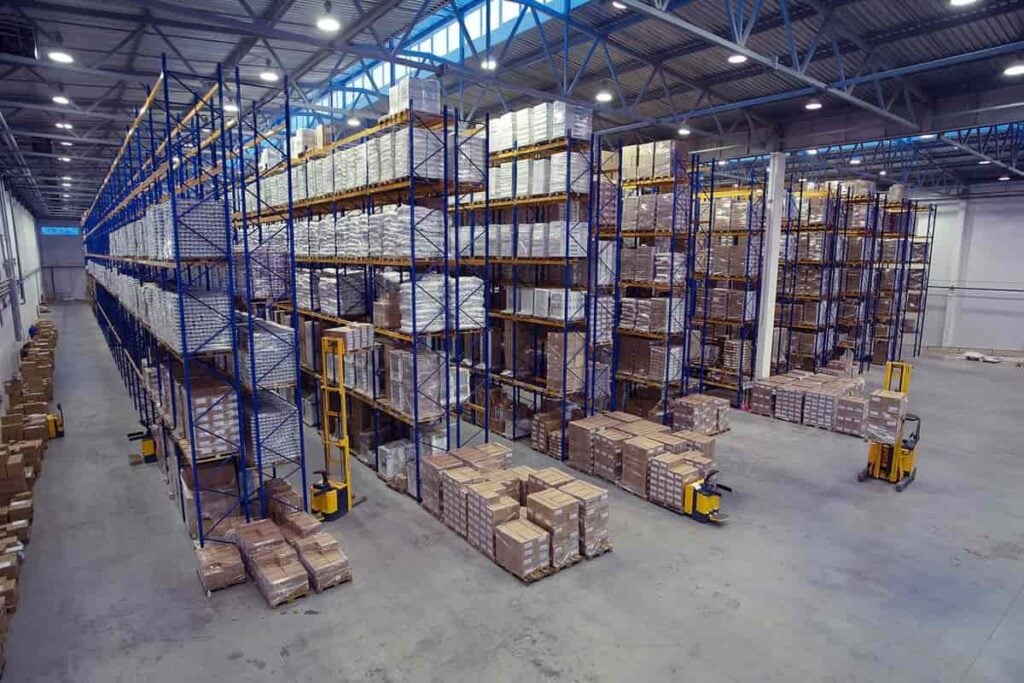IoT Inventory Management Uses AI for Supply Chains
Table of contents

Famous American philosopher George Carlin did a brilliant riff on stuff. He rightly contended that we just spend our lives moving and acquiring our stuff, and a house is just a pile of your stuff with a cover on it. Companies that are in the business of making and selling stuff have to be able to track what could amount to millions of widgets until they can unload their stuff onto someone else. There are plenty of inventory management software systems out there using artificial intelligence to help retailers be more efficient peddling stuff. For example, a company called Blue Yonder uses machine learning algorithms to crunch data, including sales and local weather forecasts, to help stores reduce out-of-stock rates of stuff while boosting profits so they can sell more stuff.
Collecting data is at the core of these various supply chain solutions, and the increasing digitization of everything means that we can now not only track stuff but learn all about each widget – its location, condition, status, astrological sign – through the Internet of Things (IoT). Let’s explore an IoT inventory management solution from one company that recently raised additional funding.
An IoT Inventory Management Solution
Silicon Valley-based startup Cloudleaf has developed an IoT inventory management system that promises real-time visibility and insights into every part of the supply chain of stuff using a sophisticated sensor network and machine learning. Founded in 2014, the company has raised a total of $39 million, including a $26 million Series B last month that included investors like Intel. Cloudleaf will take the latest infusion of funds and do the usual sort of things that rapidly growing companies hungry to monopolize market share do: expand its footprint geographically in sectors ranging from manufacturing to pharmaceutical. In other words, salespeople, dust off your CVs, you’ve got some selling to do.

Cloudleaf calls its IoT network of sensors and gateways the Sensor Fabric. Each node or edge device within the intelligent mesh generates a unique digital fingerprint that provides a ton of information about each moving part of the supply chain, such as location, temperature, and even more subtle signals such as vibration (giving sex toy manufacturers an additional layer of quality control as well). That constant stream of data – billions of data points – are streamed to the cloud. That’s where the magic happens, as the information is stored, organized, and processed in order to provide actionable insights from data-hungry algorithms.

The third leg in the Cloudleaf system, above, is the control center that monitors the health of the entire system, such as sensor battery life or connectivity issues.
Cloudleaf Case Studies
Now we want to know what’s the value in tracking stuff at such a granular level. Cloudleaf measures the success of its platform through what it calls the Cloudleaf Visibility Index (and, yes, that’s trademarked, for you piratical MBAs out there). There’s even a white paper explaining the whole concept behind the Cloudleaf Visibility Index (CVI), but we’ll save you some time and give you the CliffsNotes version: The CVI is the number of data points collected in real-time against the number of actual opportunities where data could be captured. Basically, it’s a percentage of how little or how much data a company is collecting throughout its supply chain.

Cloudleaf contends that most companies are “failing” in the sense that they only capture about 20% on average. The closer you can get to 100% means improving supply chain visibility and realizing a return on investment by as much as 70X in the first year. Let’s take a look at a couple of case studies to understand how all of this works.
A biotech company with more than 80 blood plasma donor centers needs to ensure bottles of bodily fluids remain at certain temperatures. Of course, there are times when pallets are left sitting in the midday sun as all that stuff is shifted around. Cloudleaf is able to monitor the location, temperature, and condition of each asset in real-time, providing a meticulous record for government bureaucrats while at the same time reducing spoilage and the need to retest samples. That resulted in serious savings in lost inventory and compliance.
In another case, an automotive supplier needed to track up to two million containers across more than 130 facilities throughout the United States. Each container in circulation costs $200, with about 10% loss of visibility at any given time. Obviously, knowing the status and location of every container improves workflow by managing things like excess bin inventory.
Investing in IoT Inventory Management
You’re probably thinking: That’s brilliant. Why hasn’t anyone else thought of this? Well, Cloudleaf isn’t entirely inventing a new concept. Lots of supply chain experts have been singing (well, writing) the praises of IoT inventory management, particularly in warehouse settings for the last few years. You probably wouldn’t be surprised that king of warehousing, Amazon (AMZN), offers its own range of IoT solutions through Amazon Web Services (AWS), from smart home management to industrial IoT for machine monitoring – all backed by the e-commerce giant’s prodigious AI capabilities. While AWS doesn’t explicitly offer IoT inventory management, that would seem to be the next logical step in Amazon’s march toward e-commerce hegemony.

In the last couple of years, Zebra introduced a new platform called Savanna that should sound pretty familiar by now: “Savanna is comprised of IoT end-point connectivity, configuration management, data transport, data storage, analytics and machine learning components.” Zebra has opened up the platform for partner developers to create other applications for turning all of the delicious data from IoT sensors and other hardware used by Zebra and third-party vendors into insights for its customers, which include not just retailers and manufacturers but hospitals and even sports teams.

One of its specific solutions on the Savanna platform includes SmartLens for Retail, which “turns an entire store into a ‘smart store’ that automatically senses and records the location and movement of virtually everything in the store.” That includes not just stuff but employees and customers, which not only eliminates embarrassing out-of-stocks and overstocks, but helps prevent customers from using unauthorized five-fingered discounts. Another solution called SmartPack Trailer uses 3D sensors with RGB imaging technology and analytics to ensure every load that makes it onto those self-driving trucks is loaded as efficiently and as safely as possible.
Conclusion
The Internet of Things is rapidly growing into a universe comprised of billions of connected sensors and devices that constantly stream data. Artificial intelligence can take those billion bytes of data and tell you exactly what has happened to your stuff at the corner convenience store in Timbuktu. Companies like Cloudleaf and Zebra Technologies are finding use cases across industries where being able to track the location and status of every widget can prevent loss, damage, and even fraud. That’s the sort of stuff that saves customers’ money and earns you the confidence of investors and shareholders.
Sign up to our newsletter to get more of our great research delivered straight to your inbox!
Nanalyze Weekly includes useful insights written by our team of underpaid MBAs, research on new disruptive technology stocks flying under the radar, and summaries of our recent research. Always 100% free.














